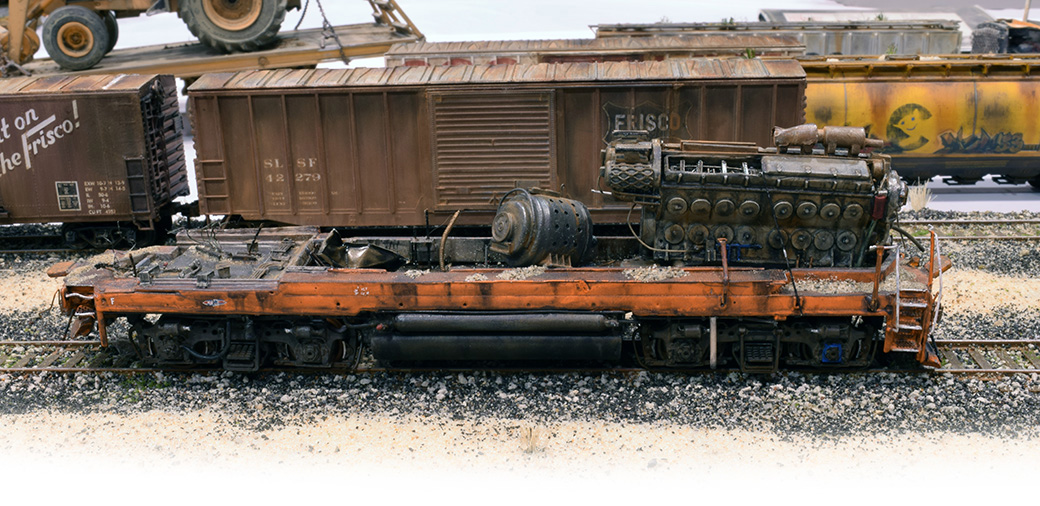
Sharing An Inspiring Craft
Susan and I attended the Collinsville, IL (St. Louis) RPM meet last weekend. The show has grown tremendously over the last few years into one of the premier events on the RPM circuit, thanks to the tireless work of organizers John Golden and Lonnie Bathurst and crew. Despite the amount of growth, the show retains the intimate feel of a smaller event. In addition to the modeling, it was great to renew many friendships and make some new ones.
While manning the OST table, I met several modelers who were attending their first RPM meet and they were, to a person, impressed with the show and the outstanding quality of the modeling.
As with most meets, the models on display were primarily HO and N scales and featured the usual assortment of scratchbuilt and kit bashed locomotives, freight and passenger cars. Truth be told, my eyes are getting too old to really appreciate the finer points of work done in those two scales these days. Don’t read that as a criticism, it’s just the reality I deal with. There were many fine examples of the craftsman’s art on display and I’ve included a few here.
I have seen this caboose by Jim Zwernemann at other meets but it’s always a pleasure to share such a fine example of P48 modeling.
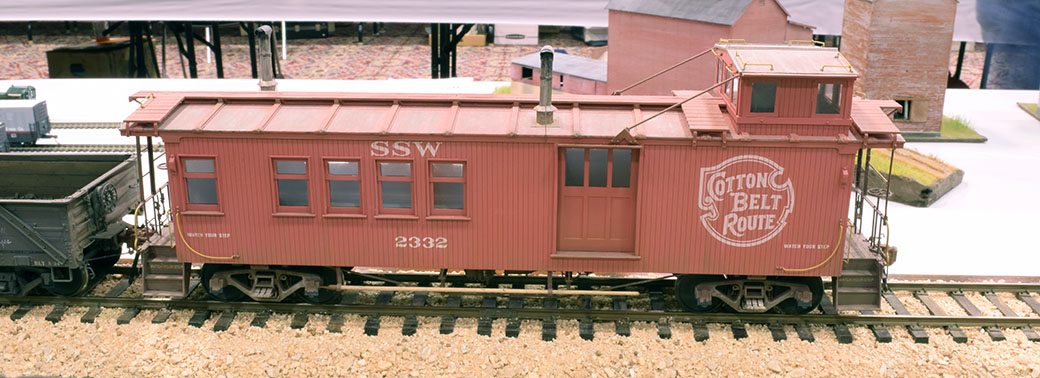
Among modern era modelers, extreme freight car weathering is all the rage, as seen by this HO example from Butch Eyler.
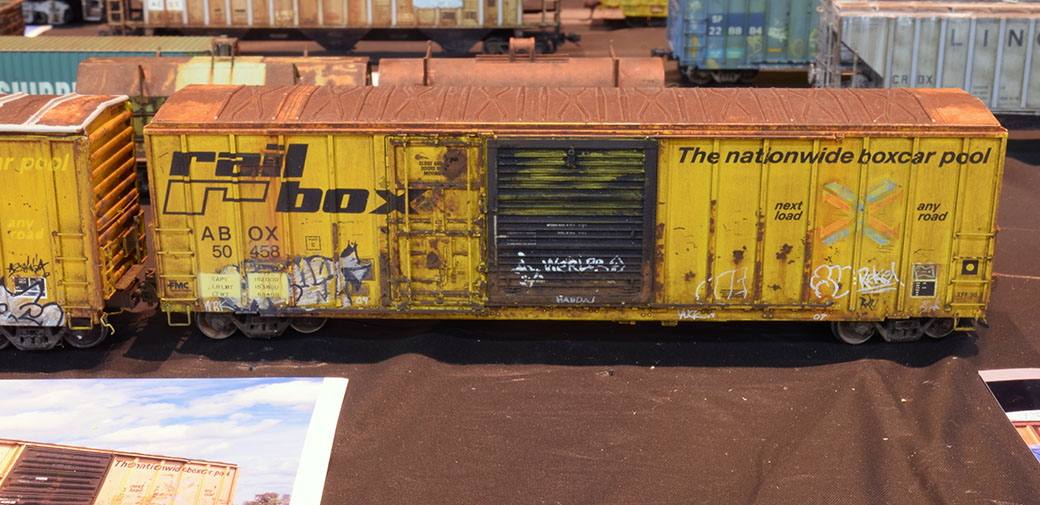
In addition, the Modutrak folks had their impressive N scale layout up and running that showcased the expansive scenes possible with the scale. The work was exquisite throughout the layout, as this yard throat reveals. I’m sorry that I didn’t get the name of the builder.
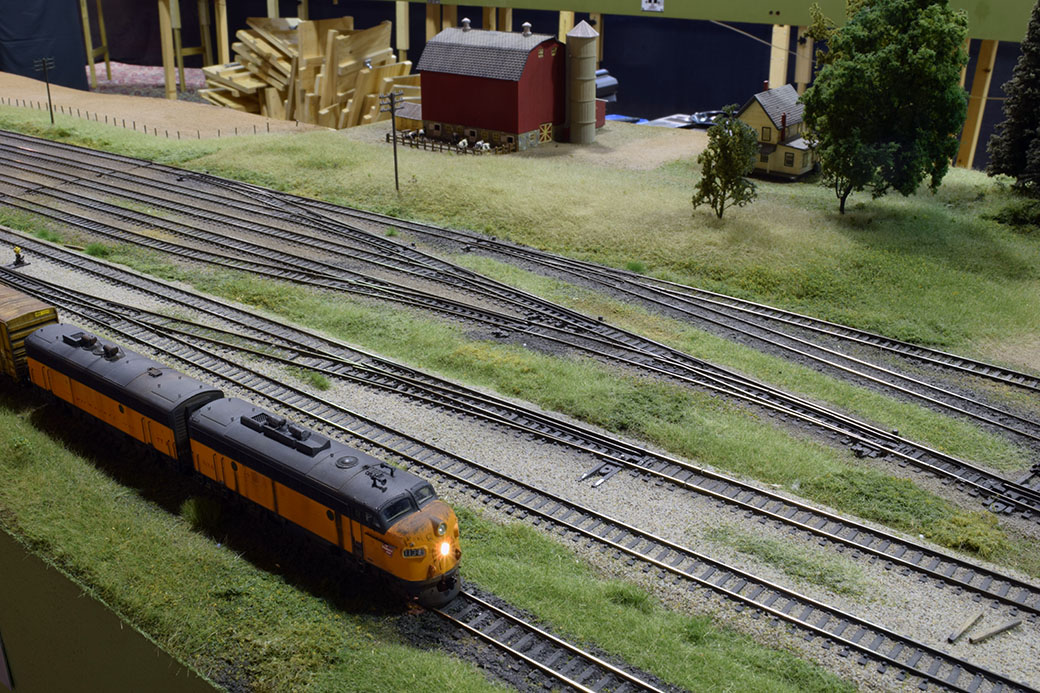
Railroad subjects like these are what you expect to see at an RPM meet. However, my eye was drawn to pieces that were out of the ordinary to say the least and the work of modeler Steve Hurt of Delaware, Ohio didn’t disappoint. He provided the scrapped Geep shown in the opening photo along with other weathered rolling stock. What really caught my eye though was this large scale hi-rail vehicle and an equally impressive logging truck.
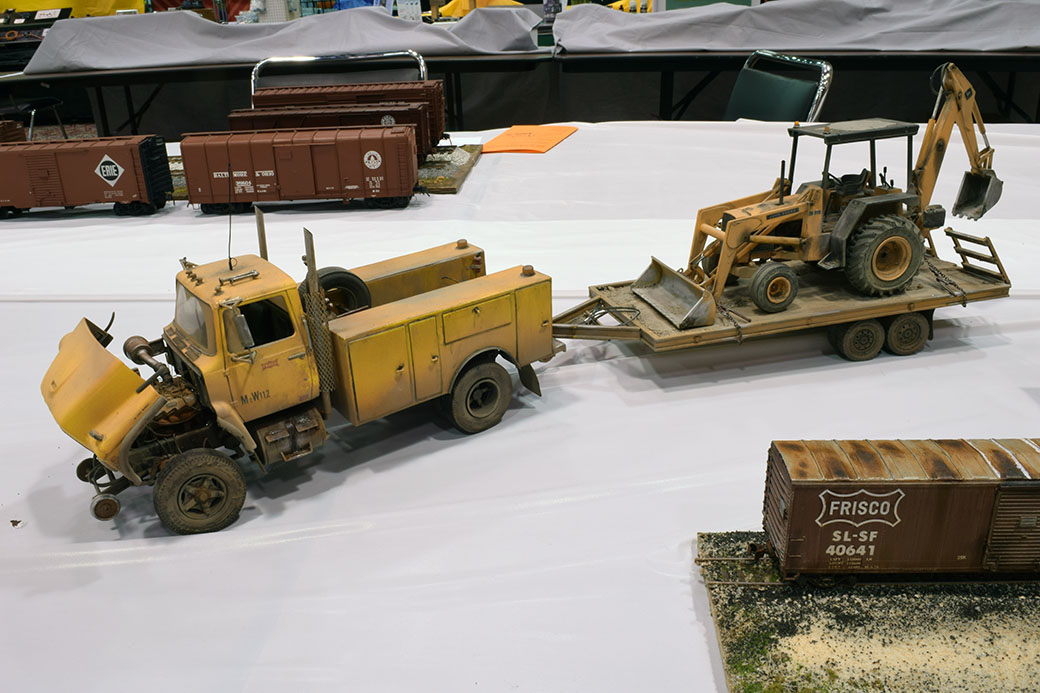
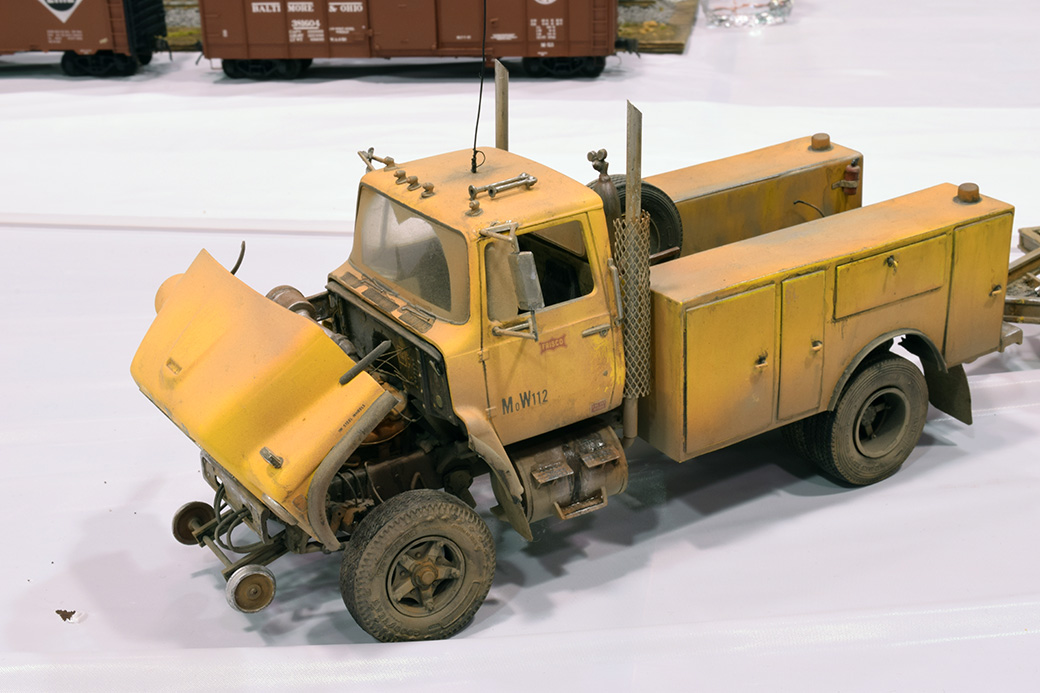
As you can see from the HO cars in the lower right foreground and the quarter-inch scale box cars in the background, this vehicle was a beast in size. I was so taken with the modeling and getting my photos that I neglected to look through Steve’s documentation for the specifics of scale and source of the kit. (Yes, I’m a lousy roving correspondent.) My guess for the scale would be 1/32 or 1/35. Needless to say the paint job and subsequent weathering were first rate and really shine on a model this big. However, the logging truck seen below was a jaw dropper.
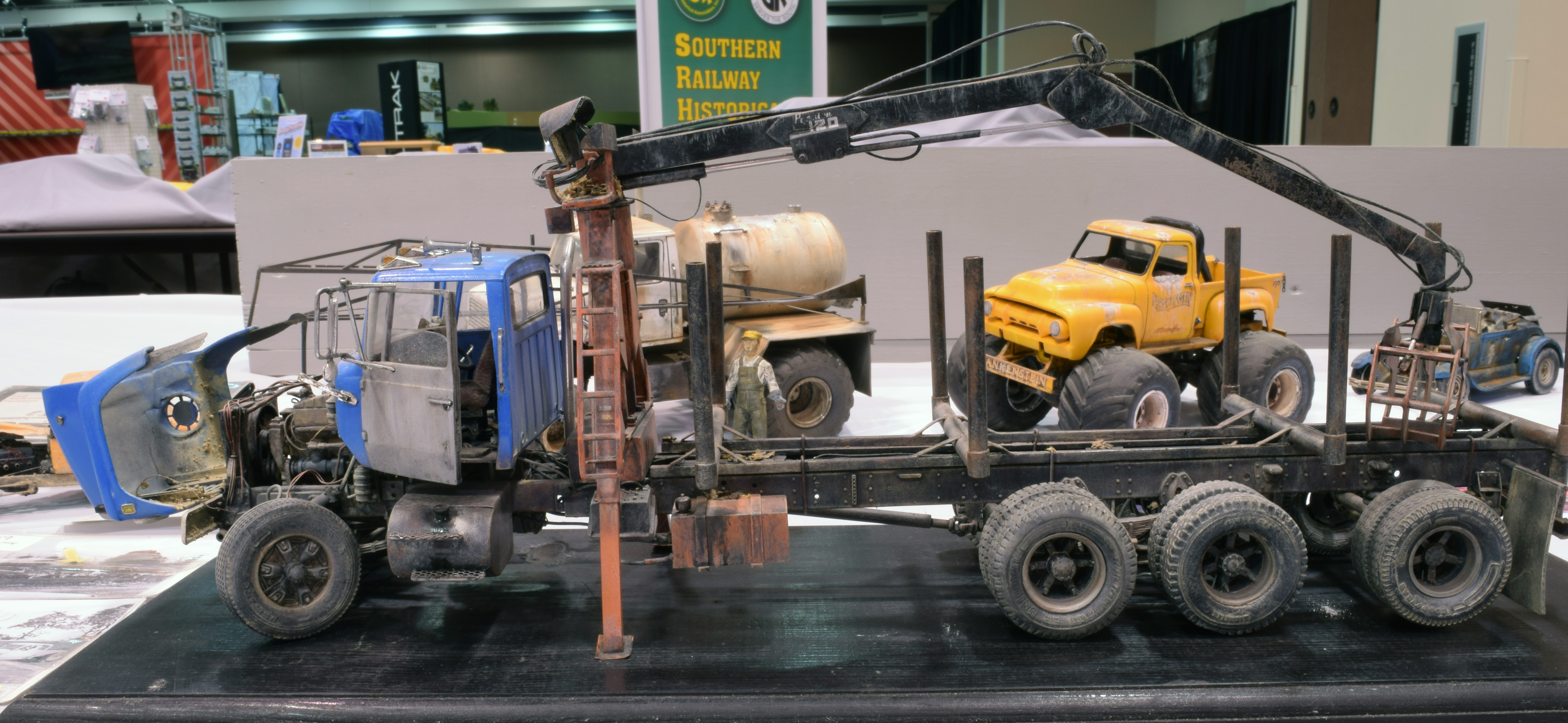
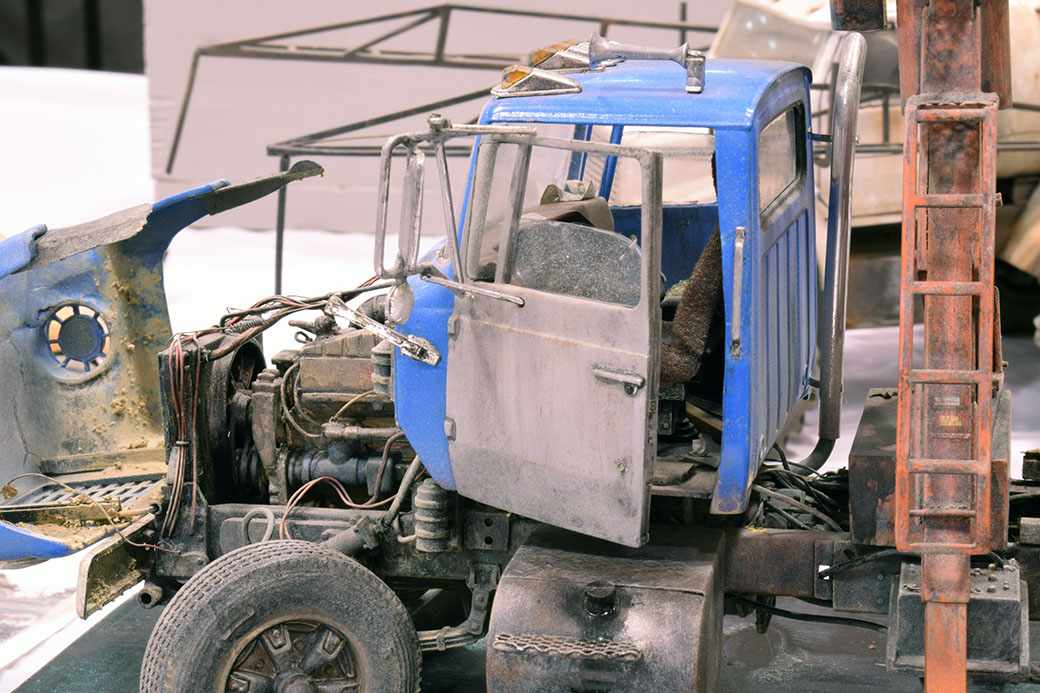
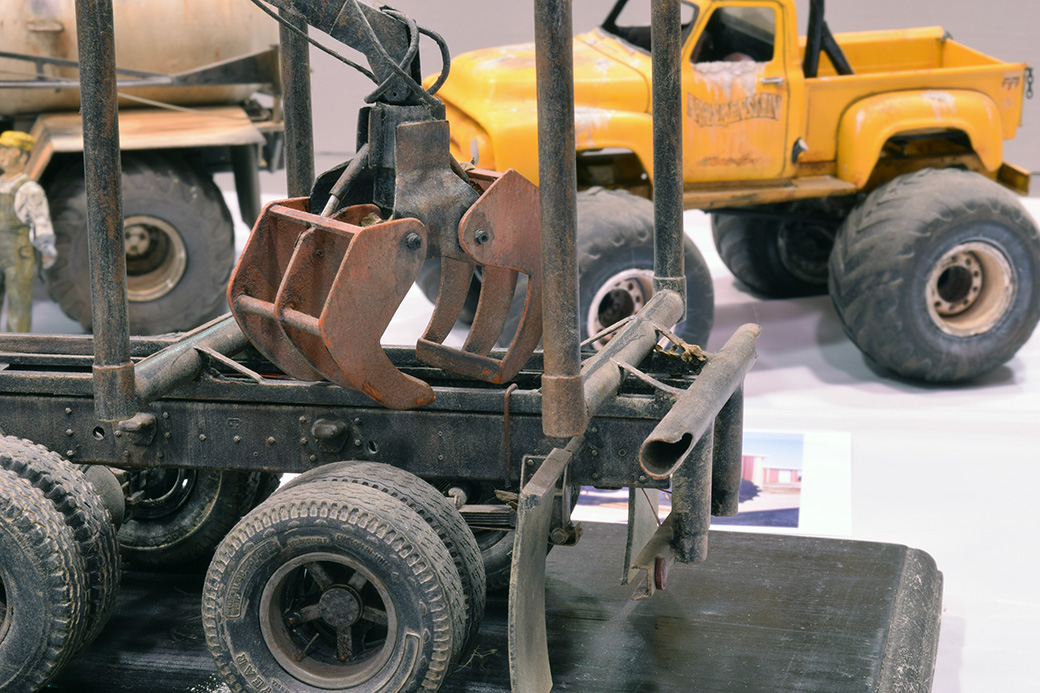
I’ve developed a genuine appreciation for the work done by the armor and aircraft folks. These models are the first large scale examples I have seen in the flesh and they did not disappoint. The nuances in the paint finish and weathering have to be seen in person to really appreciate what can be done with a model finish. Ever since I discovered work like this I’ve been convinced that there is much we could learn from it. Model railroading tends to be a closed society in many ways. Everyone reads the same magazines and uses the same techniques and products. This makes for a homogenous appearance to the work, especially since modelers tend to copy from one another, rather than innovate or experiment for themselves.
Over the last couple of years I’ve added several books on military modeling techniques to my personal library because I find work like this so inspiring. After seeing such stunning examples first hand, I’m eager to sit down at my work bench and start learning and practicing.
It’s frightfully easy to view such accomplished work and feel completely intimidated. It’s easy to tell yourself you could never do work like that and not even try. I want to assure you that even seasoned modelers carry on this conversation. The lesson I take away over and over is to start small, where the risk of failure is minimal.
Take one step, then another. The lessons of each step are built on the foundation provided by the previous. In the process you’ll develop a sense of judgement as to where your strengths are and where you need more focus or effort. Do this with regularity and you’ll be pleased with where the journey takes you. Attending an RPM meet is a wonderful way to share in our inspiring craft.
Regards,
Mike
Man, I have really got to get to one of these large RPM meets. I’m a fan of the concept and I’m beyond proud of the two we’ve now successfully staged here in Atlantic Canada. It sounds like you had a spectacular time and have returned home fueled by inspiration – a real success story.
Having never attended one of these (established) meets I’ve been evolving some assumptions regarding what I’d expect to see at one. Certainly the large scale truck models you shared photos of would be an exception to my somewhat railroad-centric expectations. As you note though, there’s a fascinating patina of story woven into each. I’m grateful that you chose to share photos of such fine work.
Even without the support of someone describing the work it’s so apparent that these vehicles have lived a life they were designed to experience. Further, the textures and general age perform in concert to describe an experience where not only have these vehicles lived a good life there’s still more they’re needed for. I like the way the technique here was applied to draw attention to the story and not themselves becoming the story.
In terms of growth, I wonder how we could learn to see the aging process as these artists do? Such as learning to tell the story of how rust takes over an object and not just how to make something look rusty.
/chris
Hi Chris,
You would certainly enjoy yourself at any RPM meet you could attend. Your instincts about the makeup of the models is spot on too. 99.9% of the models on display were of locomotives and rolling stock. There were a few structures and some dioramas and a module or two. The two vehicle models I featured were the exception rather than the rule. Another unusual example was a No. 1 gauge open tri-level auto rack that was fully loaded with cars. I believe Mike Budde was the builder. The thing was even bigger than the logging truck and would fill my writing desk.
I have noticed that once a technique catches on, it is often used indiscriminately. The current rust-bucket craze being a case in point. It becomes more about a technical tour-de-force rather than rendering an object or effect with care and restraint. Now that I’ve seen large scale models in person, I appreciate the nuances of a weathered finish even more. During the show I had an interesting conversation with a very well known HO modeler who is now working in P48. He mentioned how surprised he was at the difference between weathering a model in the two scales. He said that the typical degree of weathering acceptable for an HO model didn’t look right in the larger scale and didn’t quite understand why.
I explained it was because the implied viewing distance of quarter-inch scale is closer than it is for HO. Therefore you would see more subtle changes and effects on the larger model than you would on the smaller one. He understood what I was clumsily getting at and thought it was helpful. It was an interesting experience for me to understand where other modelers struggle with the scale.
How do we grow our understanding? By sharing such differences and seeing them first hand whenever possible. This is why I was so taken with the two vehicle models. I hope other modelers are encouraged to bring their work to these meets.
Regards,
Mike
Exquisite modelling there, Mike.
A late friend of mine used to have four hobbies: railway modelling, military modelling, fishing and drinking(!) The latter two don’t concern us here, but he was forever trying out military modelling techniques in his railway modelling. But not on new or major projects: he used cheap, old toys rather than models as “sacrificial victims” on which to practice things like painting and weathering. He taught himself how to assemble cast metal kits by buying poorly painted and poorly made examples at swap meets for a pittance, leaving them to soak in an aggressive paint stripper which also dissolved the epoxy glue, and then starting anew.
Learning the craft does not need to be expensive!
Simon